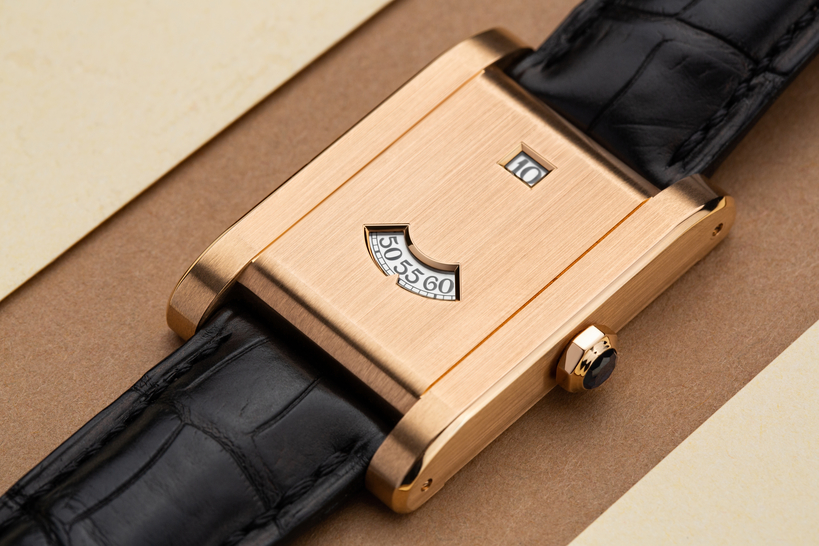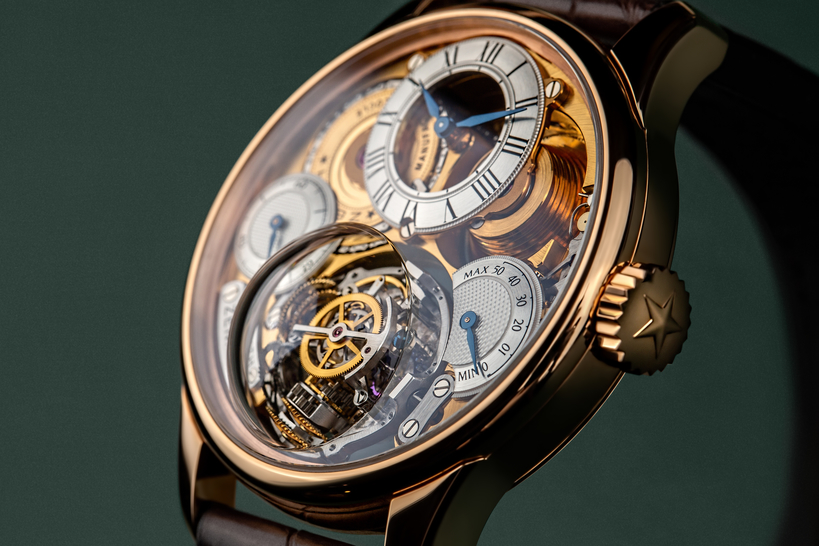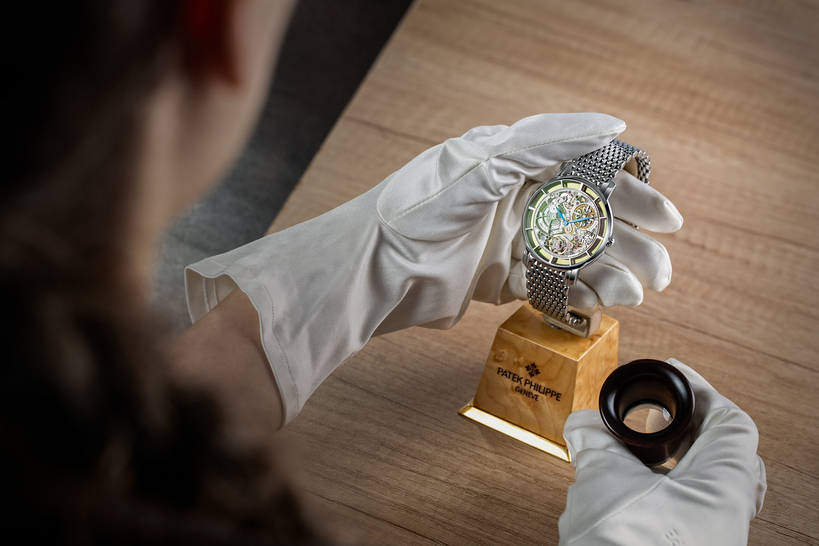We explore why the Schaffhausen brand is so fond of this classic complication.
The story of Moser & Cie. can be distinctly divided into early and recent history. The early history dates back to the year 1828 when the Swiss watchmaker, entrepreneur and industrialist Heinrich Moser set up a watch workshop in the Russian Empire, which became the company we now know as H. Moser & Cie.
Moser's watch business in Russia ended with the October Revolution in 1917, but the brand's business dealings in Switzerland continued up until the tragic period in the 1970s known as the quartz crisis. The H. Moser & Cie. brand didn't survive it. It became a part of the Dixi Mechanique Group and traded as “Hy Moser & Cie.”
The brand was revived in 2002, thanks to the efforts of Heinrich Moser's great-grandson Roger Nicholas Balsiger, and Dr. Jürgen Lange, the former technical director of IWC Schaffhausen. And so the modern history of the brand began.
In the early 2000s, it wasn't uncommon for new or revived brands to build their collections around movements developed and manufactured in-house. H. Moser & Cie. went down the very same route, and the famous independent watchmaker and designer Andreas Strehler helped with that process.
He designed a line of movements with interchangeable escapement modules, and suggested working with slow balances beating at a frequency of 2.5 Hz, which would allow the power reserve to be extended to three, five, or even seven days. The brand also has Andreas Strehler to thank for inventing the new design of a big date display with overlapping date disks.
Andreas Strehler's Calendar System
Taking the movement as his starting point, Andreas Strehler developed a perpetual calendar called the Perpetual 1. It was also dubbed the Flash Calendar thanks to its instantaneous date change function. It allows the date to instantly jump directly back to the first day at the end of every month, regardless of how long the month is.
This calendar movement was also the second in watchmaking history that could have the date set safely back or forward at any time. The first was the Perpetual Ludwig by the brand Ulysse Nardin, developed by Ludwig Oechslin. But the Perpetual 1 has the advantage of the instantaneous jump, which Ulysse Nardin's perpetual calendars didn't.
The Perpetual Ludwig has since been discontinued. The dials on the H. Moser & Cie. perpetual calendars developed by Andreas Strehler look unusual compared to calendar watches by other brands. They have a very uncluttered style — a big date, a stumpy central hand for the month, while the leap-year indication can be found on the caseback.
The month is indicated by a short central hand, but the dial doesn't have any markings to name the months. You need to use the hour markers to determine the month. For example, the small hand will point to 12 o'clock in December, 1 o'clock in January, and so on.
The dials of perpetual calendars by H. Moser & Cie. tend to have small seconds, which is rare for a perpetual calendar. But it's a very useful feature, because you can be sure your watch hasn't stopped at a glance.
Other Features of Perpetual Calendars by H. Moser & Cie.
In 2005, Moser & Cie. announced the launch of the first Perpetual 1, equipped with a seven-day power reserve. Manufacturing got underway in 2006, and the watch won the Complicated Watch Prize at the Grand Prix d’Horlogerie de Genève in the same year.
In 2007, H. Moser & Cie. introduced another invention called the Double Pull Crown — a patented modification of the winding crown's function on mechanical watches. Time is usually set with the crown pulled all the way out on watches with date displays, while the date is adjusted with the crown pulled halfway out.
The Double Pull Crown system makes the winding crown's function somewhat similar to that of a ballpoint pen, which can be rolled backwards and forwards. Here, the crown is fully pulled out a first time to set the date, and time can only be set when the crown is pulled out fully a second time.
This invention was implemented in watches with date displays, including the brand's perpetual calendars. The perpetual calendar's movement was developed further in 2007 after Thomas Straumann of the Straumann Group — a manufacturer of high-tech alloys and dental implants — became Moser's majority stakeholder.
He held onto his majority stake in Moser & Cie. until 2012. Thomas Straumann is the grandson of the engineer and entrepreneur Reinhard Straumann, who patented Nivarox in 1935, which happened to mark the beginning of a company by the same name now owned by Swatch Group.
Under Thomas Straumann, H. Moser & Cie. began manufacturing hairsprings made of alloys that had been developed by Reinhard Straumann. From 2009, the company equipped their watches with the Straumann double hairspring escapement — a neat solution, but one which couldn't be installed in all of the brand's watches due to the manufacturing costs and complexities.
This definitely raised more than the prices for these watches. It also makes these watches significantly more attractive to collectors, as in general, perpetual calendars fitted with double Straumann hairsprings are very rare. We'll highlight these watches going forward.
Moreover, H. Moser & Cie. manufacture other balance components which are rarities in the modern watch industry, including variable moment of inertia screws, balance wheels, and balance staffs.
Perpetual calendar movements are kitted out to the max, featuring the use of five gold screwed-down chatons and three gold escapement components: the escapement wheel, pallet fork and adjustable lever bankings.
Perpetual calendars were made based on caliber HMC 341 up to 2016, when H. Moser & Cie. modernized the movement, resulting in the new reference HMC 800, and an increase in the number of ruby jewels from the 28 used in the HMC 341 to 32 in the HMC 800.
The updated HMC 808 with the named month indicated in an aperture appeared in the Pioneer Perpetual Calendar MD in 2019. Another modification referenced HMC 812 with central seconds was developed for the Streamliner Perpetual Calendar and launched in 2021.
Moser & Cie. Watches on the Pre-Owned Watch Market
Generally speaking, prices for these watches on the pre-owned market are noticeably stable. Like the market on a whole, watches by H. Moser & Cie. experienced a boost in 2022 by around ten to forty percent, although this was balanced out on the pre-owned watch market, where the majority of models remained at roughly the same level as before.
It's also worth mentioning that prices on the pre-owned watch market are only marginally off recommended retail prices in a number of categories. This applies to models from the Streamliner and Heritages collections as well as a few complicated models, especially those released in small limited editions, i.e., collector's pieces.
Timeline of H. Moser & Cie. Perpetual Calendars: 2006–2012
Early perpetual calendars by H. Moser & Cie, manufactured from 2006, were originally referred to as Perpetual 1. You rarely come across this name in publications or descriptions of the watches now, which are usually called the Endeavour Perpetual Calendar — the name of the successor model.
This arguably isn't so important. One of the traits shared by watches with the original name would be considered the early reference format, such as Ref. 341.501-001, which is used to reference Perpetual 1 watches in yellow-gold cases with black dials.
Early Perpetual 1 watches typically had silver-tone or silver-gray sunburst dials, leaf-shaped hands, applied gold "baton" markers, and the words "Down/Up" on the scale for the power reserve. This was the configuration used on the Perpetual 1 Ref. 341.501-002 model in white gold with a silver-gray dial.
And also Perpetual 1 Platinum Ref. 341.501-006 in platinum with a sunburst anthracite dial and Perpetual 1 Ref. 341.501-004 in rose gold with a silver-tone sunburst dial. That last reference was awarded the Complicated Watch Prize at the Grand Prix d’Horlogerie de Genève in 2006.
The referencing system changed for subsequent watches to the modern format with two sets of four digits, such as Ref. 1341-0102 for Perpetual 1 watches in rose gold with black dials (limited edition of 100 pieces). The transition from the name Perpetual 1 to Endeavour Perpetual Calendar probably took place in 2014 after the collection launch.
The first perpetual calendars appeared in the Heritage and Pioneer collections in 2016, and finally, in 2021, the Streamliner collection welcomed a perpetual calendar. The Perpetual 1 (Endeavour Perpetual Calendar) with a dial configured in the original design was manufactured with many variations in rose gold, white gold, platinum, and even in palladium.
Palladium models were the first to be given the signature fumé dial in and around 2009. Early perpetual calendars with fumé dials that you might encounter primarily have two tones: gray (Ardiose Fumé) or deep blue (Midnight Blue Fumé).
The rarest would be considered the golden fumé dial, which appeared on the Perpetual 1 (Endeavour Perpetual Calendar) Golden Edition Ref. 1341-0101 housed in a rose-gold case (a limited edition of 100 pieces).
Credits provided by: www.h-moser.com, www.revolutionwatch.com, www.bachmann-scher.de, www.baerandbosch.com




















